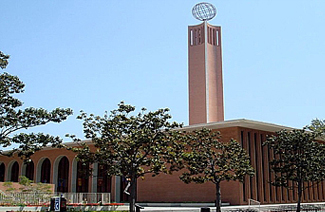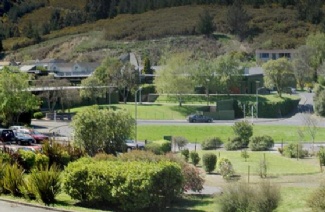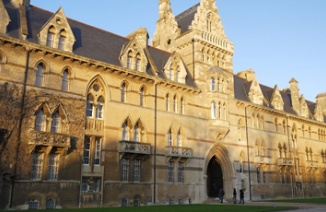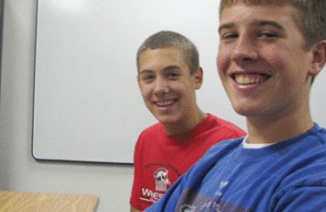雅思OGtest8听力section4第一题正确答案为hook,如何结合听力上下文找到答案呢,本文雅思OGtest8听力section4听力原文题目及答案解析【附MP3音频】为大家提供详细的练习题及答案解析完整版,方便大家做雅思听力练习。
Question 31
答案:hook
定位原文:One New Caledonian crow, called Betty, bent some straight wire into a hook and used it to lift a small bucket of her favourite food from a vertical pipe.
解题思路:One New Caledonian crow, called Betty,提示下文即将讨论到这种乌鸦会如何使用工具,定位到紧随其后的bent some straight wire into a hook and used it to lift a small bucket of her favourite food from a vertical pipe。注意题目的hook out of wire是对wire into a hook的同义转述,二者都是“金属丝做成的钩”的意思。move a bucket of food是对lift a small bucket of food的同义转述。bend (过去式和过去分词都是bent),使弯曲。
Question 32
答案:string
定位原文:The crows first had to pull up a string to get a short stick.
解题思路:In one research project, scientists from New Zealand and Oxford set captive New Caledonian crows a three-stage problem, 提示下文即将讨论实验的具体内容,定位到the crows first had to pull up a string to get a short stick。填空题目中,in order to reach a short stick是对to get a short stick的同义转述,所以string是正确答案。
Question 33
答案:danger
定位原文:Further experiments carried out at Oxford suggest that crows can also use sticks as tools to inspect all sorts of objects, possibly to assess whether or not they present a danger.
解题思路:Further experiments carried out at Oxford suggest that…,提示下文将讨论关于牛津实验的内容。定位到紧随其后的that crows can also use sticks as tools to inspect all sorts of objects, possibly to assess whether or not they present a danger。题目中,investigate是对inspect的同义转述。
Question 34
答案:rubber
定位原文:One involved a rubber snake.
解题思路:Barney began by using a stick for inspection,提示下文将谈论到研究的是什么蛇。定位到紧随其后的One involved a rubber snake。这条蛇是一条橡胶蛇。
Question 35
答案:light
定位原文:Pierre used a short piece of woodchip to touch a light which was flashing.
解题思路:Pierre used a short piece of woodchip to,提示下文将会谈到Pierre会用棍子研究什么,定位到紧随其后的to touch a light which was flashing。flash,闪光,闪烁。
Question 36
答案:intelligence
定位原文:A major difficulty is assessing whether this tool-using behavior is a sign of intelligence.
解题思路:So what conclusions can be drawn from the research? 提示下文即将讨论实验结论,第一个实验结论就是ability to plan provides interesting evidence of the birds’ cognition;根据题目的unclear weather定位到第二个实验结论a major difficulty is assessing whether this tool-using behavior is a sign of intelligence。unclear(不清楚的,不明白的)是对a major difficulty is的同义转述;evidence of(证据)是对a sign of(一个标志)的同义转述。intelligence,智力。
Question 37
答案:tail(s)
定位原文:The researchers have attached tiny cameras to the tails of some birds.
解题思路:the researchers have attached tiny cameras,提示下文将说到小相机放置在鸟身上的具体位置,定位到紧随其后的to the tails of some birds。very small是对tiny的同义转述。tiny,极小的,微小的。attach A to B,使A附着于B。
Question 38
答案:energy
定位原文:It's possible that the birds can derive so much energy from these grubs that they only need to eat a few each day.
解题思路:The birds are masters at using sticks to find their food, in particular beetle larvae from the trees,提示下文将讨论甲虫幼虫作为鸟食为鸟提供什么。定位到It's possible that the birds can derive so much energy from these grubs that they only need to eat a few each day。master,大师,主人;in particular, 特别是,尤其是;beetle,甲虫;larva,(昆虫的)幼虫,复数是larvae;derive A from B,从B中获得A;grub,幼虫。
Question 39
答案:chemical
定位原文:The beetle larvae have a distinct chemical make-up.
解题思路:The beetle larvae…,定位到紧随其后的have a distinct chemical make-up, which can be traced through the feathers and blood of birds that eat them。composition是对make-up的同义转述;be identified in是对be traced through的同义转述。
Question 40
答案:diet
定位原文:Scientists have collected samples from crows in order to estimate the proportion of larvae in their diet.
解题思路:Scientists have collected samples from crows in order to estimate…提示下文即将谈论科学家会分析什么,定位到紧随其后的the proportion of larvae in their diet。estimate(估计)从属于analyse(分析)这个词,算分析的一部分。proportion,比例;diet,日常饮食;sample,样品。
听力原文:
Listening Section 4
I'm going to talk today about research into a particular species of bird, the New Caledonian crow, whose natural habitat is small islands in the Pacific Ocean. And it seems that these crows are exceptionally resourceful.
Using sticks or other tools to find food isn't unknown among birds and animals. Some chimpanzees, for example, are known to bang nuts on stones, in order to break the shell and get at the edible kernel inside. One New Caledonian crow, called Betty, bent some straight wire into a hook and used it to lift a small bucket of her favourite food from a vertical pipe. This experiment was the first time she'd been presented with wire, which makes it very impressive. Another crow, called Barney, has demonstrated his skill at using sticks to forage for food.
In one research project, scientists from New Zealand and Oxford set captive New Caledonian crows a three-stage problem: if they wanted to extract food from a hole, the crows first had to pull up a string to get a short stick, then use that short stick to remove a long stick from a toolbox, and finally use the long stick to reach the food. Amazingly, they worked out how to do this successfully.
Further experiments carried out at Oxford suggest that crows can also use sticks as tools to inspect all sorts of objects, possibly to assess whether or not they present a danger. The idea for the experiment came from observing the birds using tools to pick at random objects, such as a picture of a spider that was printed on some cloth. In this research, five pairs of crows - including Barney - underwent tests to see how they would react to a variety of objects, which were carefully chosen so the birds wouldn’t be tempted to view them as a possible source of food. As a further precaution, all the crows had been fed beforehand.
On eight occasions, a bird's first contact was by using a tool.
In all three trials, Barney began by using a stick for inspection. One involved a rubber snake. First he approached it, but didn't touch it, then retreated to pick up a stick. He then prodded it with the stick. After some more investigation, he discarded the stick and carried on pecking at the snake more confidently - apparently convinced that it wouldn't move.
In other experiments, two different birds, called Pierre and Corbeau, also made a first approach with tools on three separate occasions. Pierre used a short piece of woodchip to touch a light which was flashing, and Corbeau was seen prodding a metal toad with a stick.
Significantly, the crows tended to use the sticks only to make their first contact with the object. Subsequently, they either ignored the object or dropped the tool and pecked at the object - which is very different from using the tool to get access to food.
[pause]
So what conclusions can be drawn from the research?
Evidence is building up from experiments such as these that the birds are able to plan their actions in advance, which is very interesting for understanding their cognition. They don't seem to be responding in a pre-programmed sort of way: it may even be possible that they're able to view a problem and work out what the answer is. However, a major difficulty is assessing whether this tool-using behaviour is a sign of intelligence. To some extent, this is related to the ecological circumstances in which the animal is found.
So scientists want to find out much more about how the crows behave in their native habitat, and a team from Exeter and Oxford universities is carrying out research in New Caledonia. They’re looking into whether the birds’ way of searching for food gives them any possible evolutionary advantage. The birds are hard to observe, as they live in a region of mountainous forest, so the researchers have attached tiny cameras to the tails of some birds, as one method of investigating their behaviour.
The birds are masters at using sticks to find their food, in particular beetle larvae from the trees. It's possible that the birds can derive so much energy from these grubs that they only need to eat a few each day. This would mean that they wouldn't have to spend most of their waking time searching for food, as most animals do.
The beetle larvae have a distinct chemical make-up. which can be traced through the feathers and blood of birds that eat them. Scientists have collected samples from crows in order to estimate the proportion of larvae in their diet. They should then be able to gauge the extent to which individual birds depend on using sticks to feed themselves.
We've learnt a great deal about the ability of New Caledonian crows to use tools, and some very interesting research is being carried out into them.

















